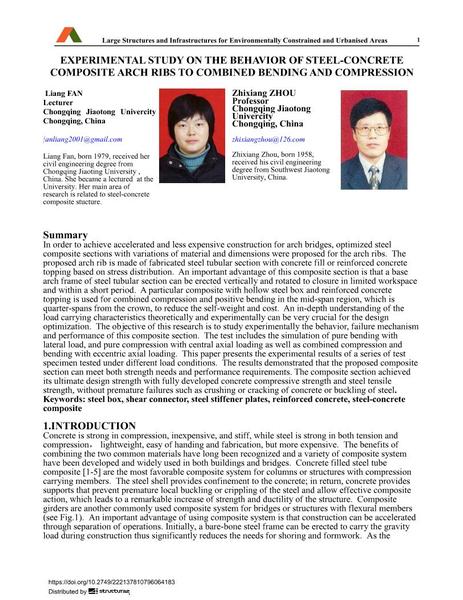Experimental Study on the Behavior of Steel-Concrete Composite Arch Ribs to Combined Bending and Compression

|
|
|||||||||||
Détails bibliographiques
| Auteur(s): |
Liang Fan
Zhixiang Zhou |
||||
|---|---|---|---|---|---|
| Médium: | papier de conférence | ||||
| Langue(s): | anglais | ||||
| Conférence: | IABSE Symposium: Large Structures and Infrastructures for Environmentally Constrained and Urbanised Areas, Venice, Italy, 22-24 September 2010 | ||||
| Publié dans: | IABSE Symposium Venice 2010 | ||||
|
|||||
| Page(s): | 884-885 | ||||
| Nombre total de pages (du PDF): | 8 | ||||
| Année: | 2010 | ||||
| DOI: | 10.2749/222137810796064183 | ||||
| Abstrait: |
In order to achieve accelerated and less expensive construction for arch bridges, optimized steel composite sections with variations of material and dimensions were proposed for the arch ribs. The proposed arch rib is made of fabricated steel tubular section with concrete fill or reinforced concrete topping based on stress distribution. An important advantage of this composite section is that a base arch frame of steel tubular section can be erected vertically and rotated to closure in limited workspace and within a short period. A particular composite with hollow steel box and reinforced concrete topping is used for combined compression and positive bending in the mid-span region, which is quarter-spans from the crown, to reduce the self-weight and cost. An in-depth understanding of the load carrying characteristics theoretically and experimentally can be very crucial for the design optimization. The objective of this research is to study experimentally the behavior, failure mechanism and performance of this composite section. The test includes the simulation of pure bending with lateral load, and pure compression with central axial loading as well as combined compression and bending with eccentric axial loading. This paper presents the experimental results of a series of test specimen tested under different load conditions. The results demonstrated that the proposed composite section can meet both strength needs and performance requirements. The composite section achieved its ultimate design strength with fully developed concrete compressive strength and steel tensile strength, without premature failures such as crushing or cracking of concrete or buckling of steel. |
||||
